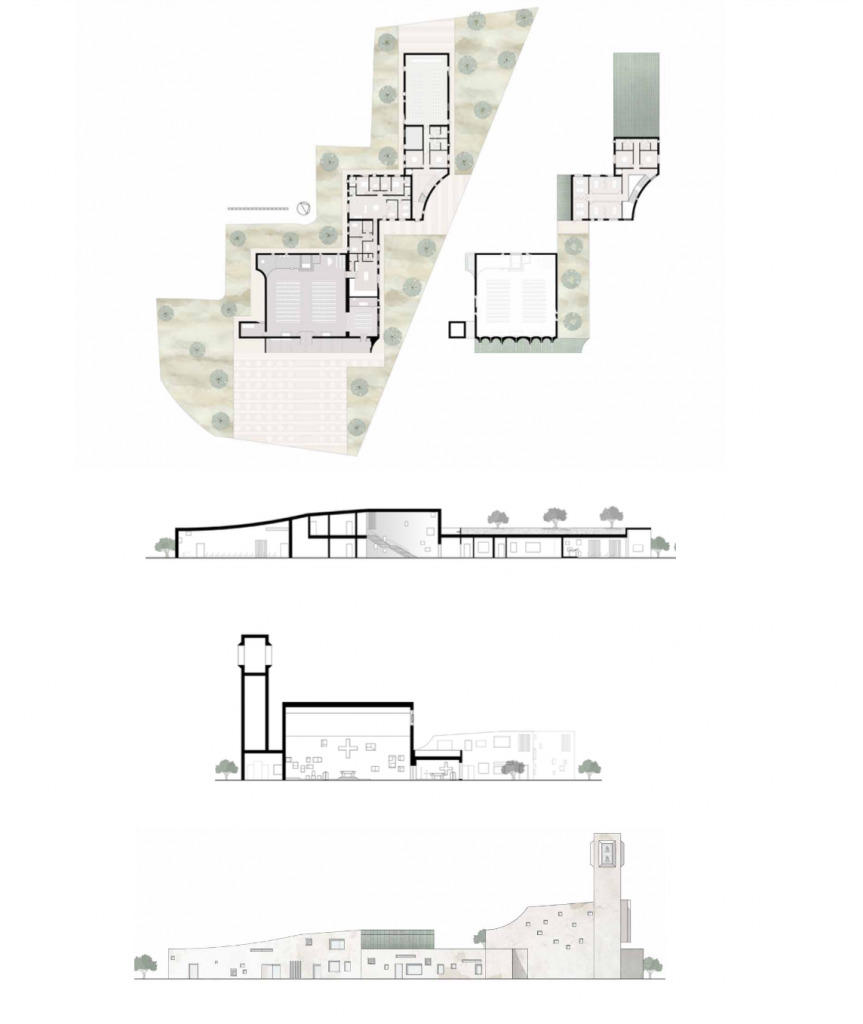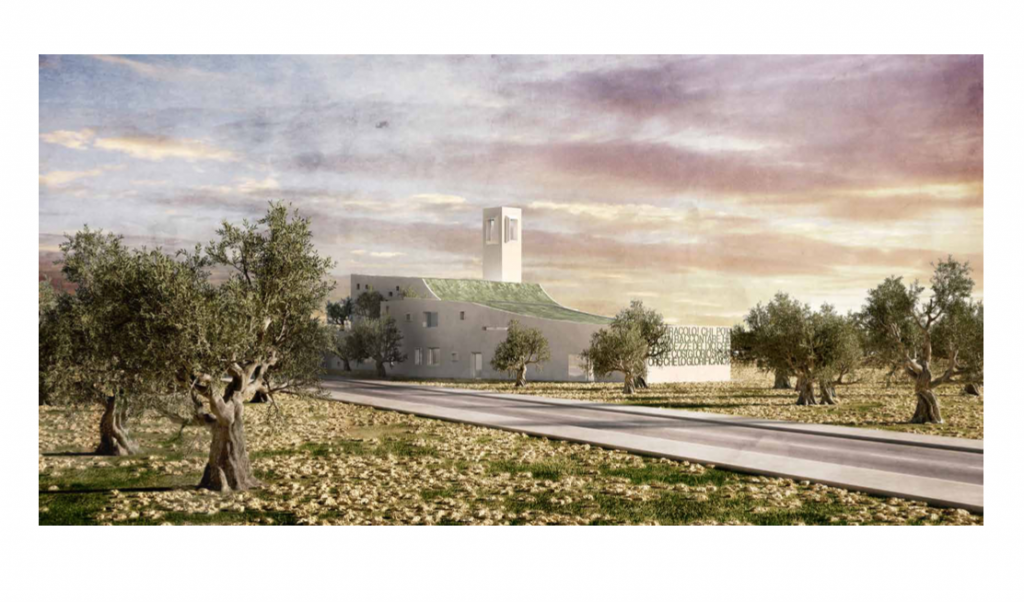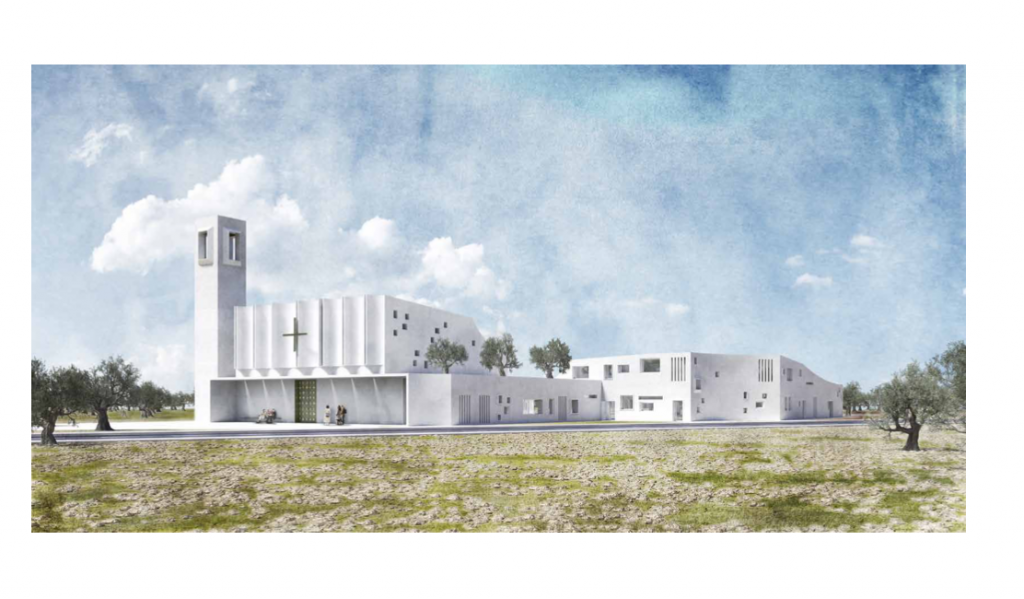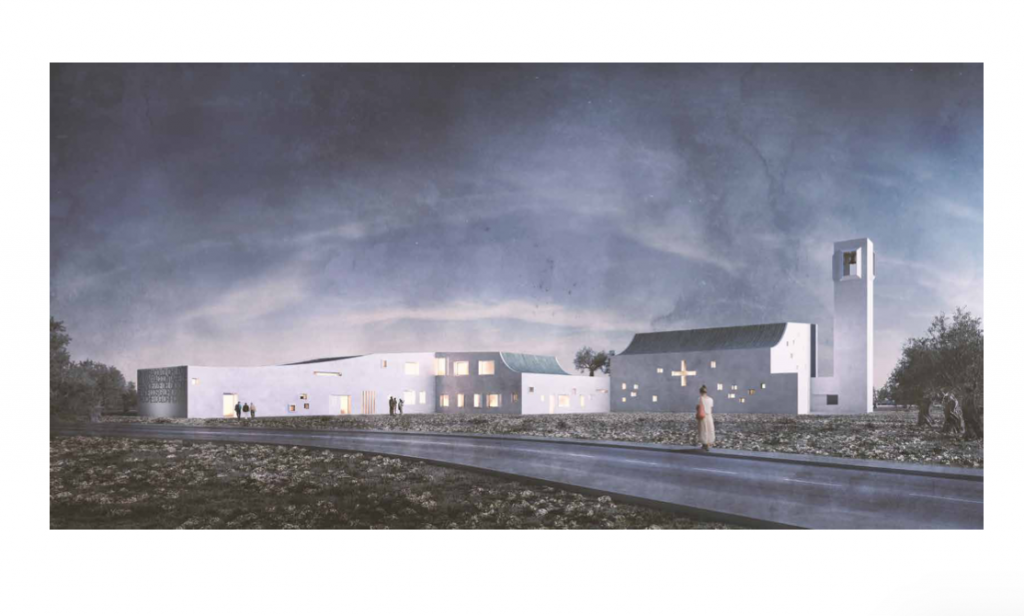Chiesa Simeri Mare CEI Arcidiocesi di Catanzaro Squillace
2020
Nel panorama locale di riferimento la figura ispiratrice è quella di S. Bartolomeo, e con essa il confronto tra il linguaggio iconico bizantino e greco ortodosso, storicamente presenti nell’area circostante, e la frugalità degli spazi e delle raffigurazioni delle prime chiese. Ispirata a questi concetti di semplicità e legame con l’identità del luogo, la nuova chiesa di S. Bartolomeo da Simeri sorgerà al posto della piccola chiesa esistente mantenendone i caratteri di riconoscibilità, rispettando lo stesso orientamento, restaurando la vetrata esistente e riposizionandola nella cappella feriale, riutilizzando il pavimento e seminandolo in opera nel nuovo. A questi si aggiungono il campanile, il fronte principale con elementi curvilinei, le due grandi croci posizionate nelle due facciate e le parole di San Bartolomeo, posizionate in rilievo sull’edificio, che permettono la riconoscibilità da chi arriva dal Viale Santa Chiara. Le scelte progettuali sono improntate ad una sobrietà concettuale e costruttiva, dove spiccano i caratteri di semplicità attraverso un progetto unitario, che raccoglie tutte le richieste del programma liturgico pastorale. Aula liturgica e spazi parrocchiali, pur distinti, sono legati in un unico corpo di fabbrica, tenendo conto dei vincoli urbanistici e della forma del terreno, in modo che l’unitarietà del complesso parrocchiale risponda agli usi richiesti, creando al contempo spazi esterni in grado di diventare ampi e funzionali luoghi di incontro. L’intero complesso parrocchiale è protetto da un manto di copertura sinuoso realizzato con metallo di colore verde olivo, che unisce l’architettura al paesaggio, così da essere parte dello stesso racconto, caratterizzato dalla presenza di olivi, dei quali tre li ritroviamo posti nell’orto della contemplazione a fianco della chiesa, a simboleggiare l’oliveto del Getsemani, luogo chiave della fede cristiana. È un’architettura in grado di dialogare con il contesto, cercando di arricchire il rapporto tra il nuovo complesso parrocchiale e l’ambiente circostante, un’architettura di mediazione tra la collina, la campagna e il mare.
Simeri Mare Church CEI Diocese of Catanzaro Squillace 2020
In the local scene of reference, the inspiring figure is that of St. Bartholomew, and the comparison between the iconic Byzantine language and Greek Orthodox, historically present in the surrounding area, and the frugality of the spaces and the depictions of the first churches. Inspired by these concepts of simplicity and link with the identity of the place, the new church of St. Bartholomew of Simeri will rise in place of the small existing church. It maintains the characters of recognizability, respecting the same orientation, restoring the existing glass and repositioning it in the weekday chapel, reusing the floor, and sowing it at work in the new. To these are added the bell tower, the main front with curved elements, the two large crosses positioned in the two facades, and the words of Saint Bartholomew, positioned in relief on the building, which allow recognizability by those arriving from Viale Santa Chiara. The design choices are marked by conceptual and constructive sobriety, where the characters of simplicity stand out through a unified project, which collects all the demands of the pastoral liturgical program. Liturgical hall and parish spaces, although distinct, are linked in a single body of factory, taking into account the urban constraints and the shape of the land, so that the unity of the parish complex meets the required uses, while creating outdoor spaces that can become large and functional meeting places. The entire parish complex is protected by a sinuous covering made of metal of olive green color, which combines the architecture to the landscape, to be part of the same story, characterized by the presence of olive trees, of which three are placed in the garden of contemplation next to the church, to symbolize the olive grove of Gethsemane, the key place of the Christian faith. It is an architecture able to dialogue with the context, trying to enrich the relationship between the new parish complex and the surrounding environment, an architecture of mediation between the hill, the countryside and the sea.



